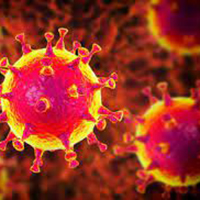Association of cycle threshold values of CBNAAT with severity and outcome in COVID-19

Submitted: January 3, 2021
Accepted: June 8, 2021
Published: July 21, 2021
Accepted: June 8, 2021
Abstract Views: 1812
PDF: 841
Publisher's note
All claims expressed in this article are solely those of the authors and do not necessarily represent those of their affiliated organizations, or those of the publisher, the editors and the reviewers. Any product that may be evaluated in this article or claim that may be made by its manufacturer is not guaranteed or endorsed by the publisher.
All claims expressed in this article are solely those of the authors and do not necessarily represent those of their affiliated organizations, or those of the publisher, the editors and the reviewers. Any product that may be evaluated in this article or claim that may be made by its manufacturer is not guaranteed or endorsed by the publisher.
Similar Articles
- Shreyash Agrawal, Ravindra Nath, Pranav Ish, Neeraj Kumar Gupta, Rajni Gaind, Suniti Kale, Rani Gera, Anjali Dabral, Nitesh Gupta, *Other members of the Safdarjung Hospital COVID 2019 working group, Clinico-epidemiological profile of COVID-19 patients admitted during third wave of pandemic in a tertiary care hospital in New Delhi, India , Monaldi Archives for Chest Disease: Vol. 93 No. 2 (2023)
- Laura Bertacchini, Mara Paneroni, Laura Comini, Simonetta Scalvini, Michele Vitacca, Recovering of oxygenation, physical function and disability in patients with Covid-19 , Monaldi Archives for Chest Disease: Vol. 91 No. 4 (2021)
- Anu Anna George, Kevin John John, Anil Jha, Ajay Kumar Mishra, Infections precipitating Takotsubo cardiomyopathy, an uncommon complication of a common infection , Monaldi Archives for Chest Disease: Vol. 93 No. 3 (2023)
- Ruby Joseph, Kavitha Venkatnarayan, Ashitha Nanaiah, Priya Ramachandran, A case of hoarseness of voice following COVID-19 infection , Monaldi Archives for Chest Disease: Vol. 93 No. 4 (2023)
- Matilde Boccia, Luigi Aronne, Benito Celia, Grazia Mazzeo, Maria Ceparano, Vito D'Agnano, Roberto Parrella, Tullio Valente, Andrea Bianco, Fabio Perrotta, COVID-19 and coagulative axis: review of emerging aspects in a novel disease , Monaldi Archives for Chest Disease: Vol. 90 No. 2 (2020)
You may also start an advanced similarity search for this article.

 https://doi.org/10.4081/monaldi.2021.1759
https://doi.org/10.4081/monaldi.2021.1759





